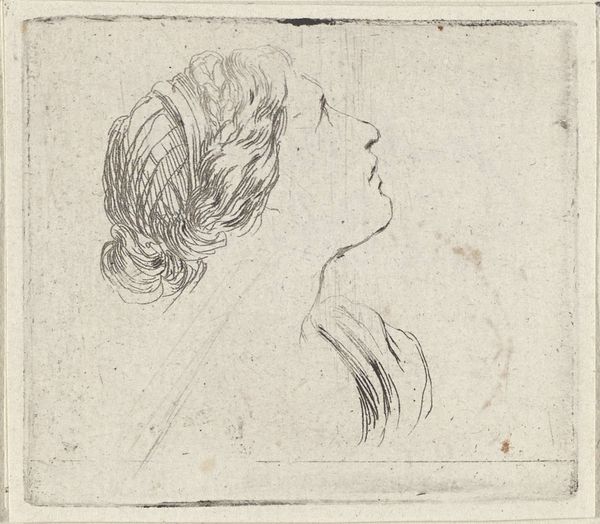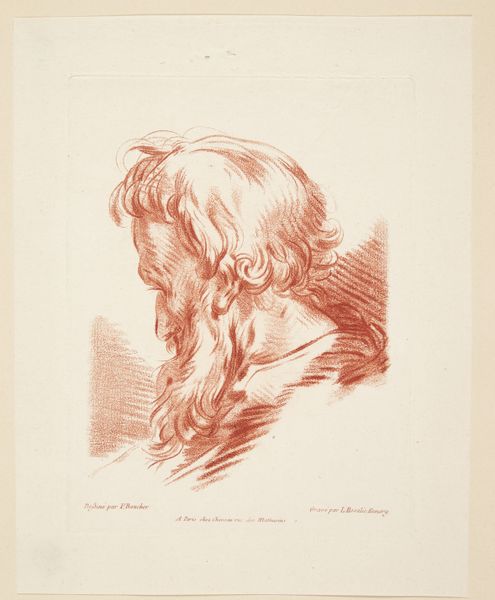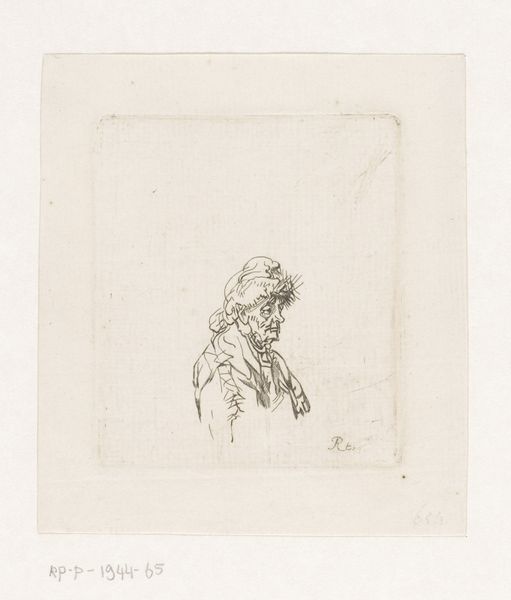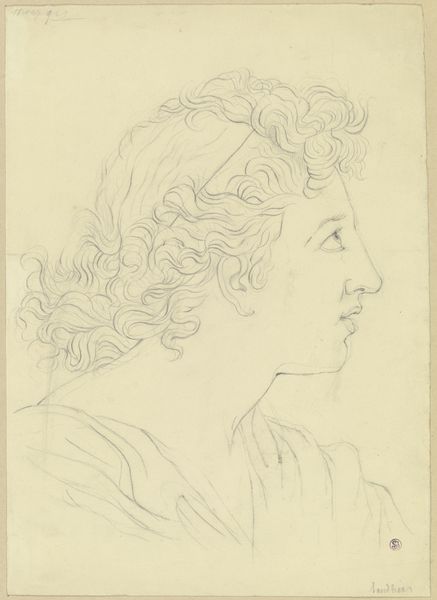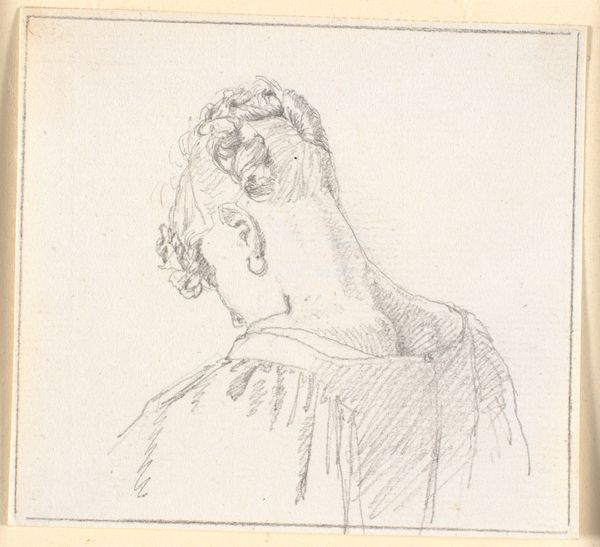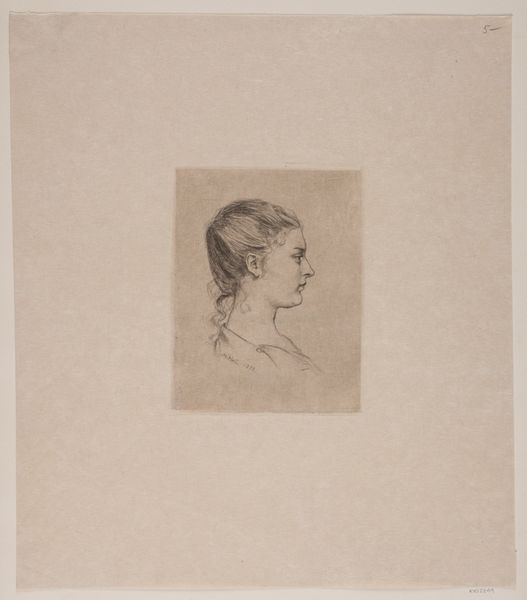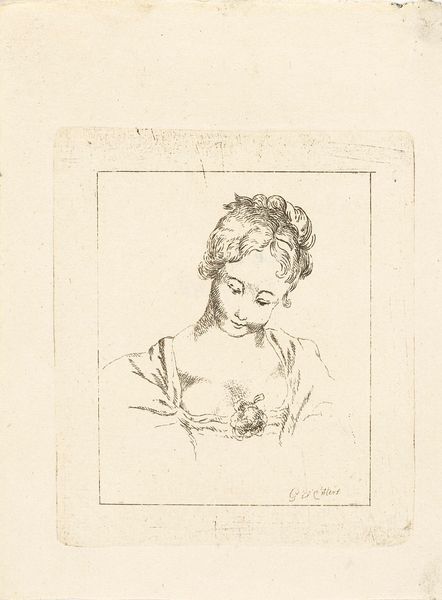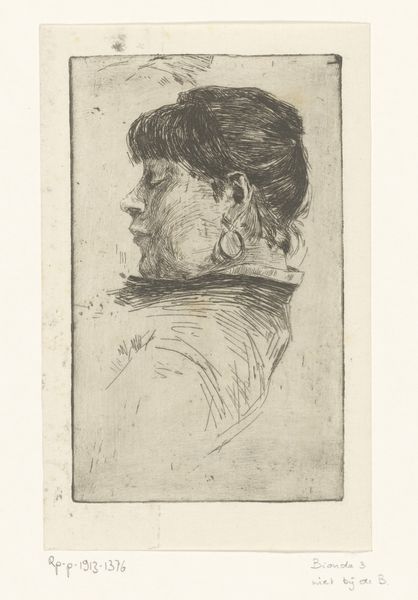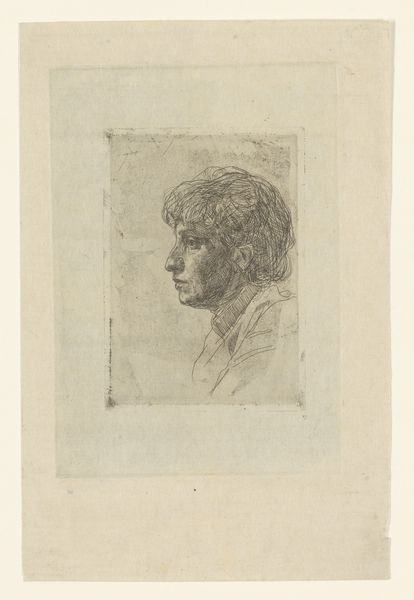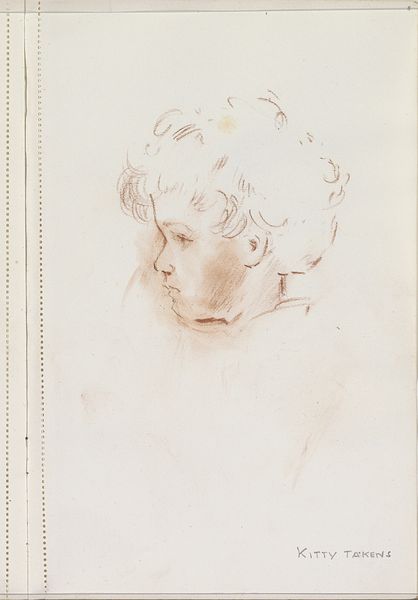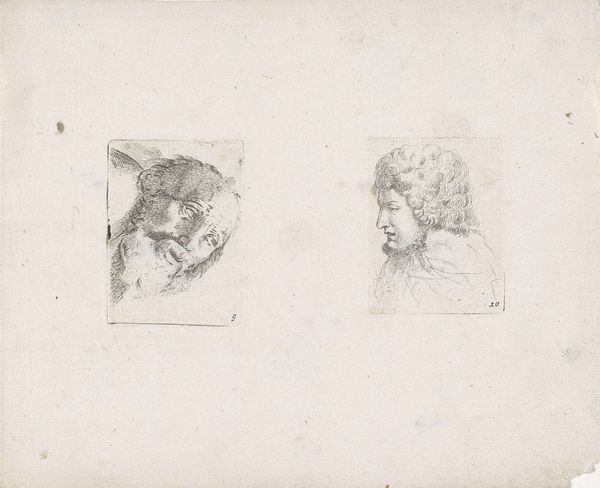
drawing, print, etching, graphite
#
portrait
#
drawing
#
baroque
# print
#
etching
#
figuration
#
graphite
#
history-painting
Dimensions: 3 1/16 x 3 13/16 in. (7.78 x 9.68 cm) (plate)
Copyright: Public Domain
Editor: This is "Bust of Woman From Behind," an etching by Stefano della Bella, from around the 17th century. It’s interesting how much personality comes through even though we don't see her face. I’m curious about what this piece might tell us about the way women were viewed or presented at this time. What are your thoughts on it? Curator: The fact that Bella chose to depict a woman from behind, turning away from the viewer, already speaks volumes. What does it mean to represent a woman in this era, not head-on, engaging directly, but rather in a posture of retreat, or perhaps of interiority? How does this potentially subvert or challenge the conventions of portraiture at the time, particularly given the limitations and expectations placed upon women within societal structures? Editor: That’s a great point; I hadn’t considered that it might be a challenge to conventional portraiture. It seems to resist objectification. Is there anything else that reinforces that interpretation? Curator: Consider the context of the Baroque period. The focus wasn't necessarily on radical disruptions but instead often used symbolism within established forms. How does Bella use the texture and depth of the etching, particularly in the rendering of her hair, to create a sense of complexity and perhaps even defiance that still operates within accepted forms? Can we read into this a subtle commentary on female agency? Perhaps this 'turning away' allows her to have some semblance of control? Editor: I see what you mean. Even within those constraints, there's still a kind of statement being made. Thanks for helping me see that. Curator: My pleasure. I’d encourage you to consider how even seemingly simple choices about presentation carry social and political implications, especially when considering representation and the subversion of norms.
Comments
No comments
Be the first to comment and join the conversation on the ultimate creative platform.

